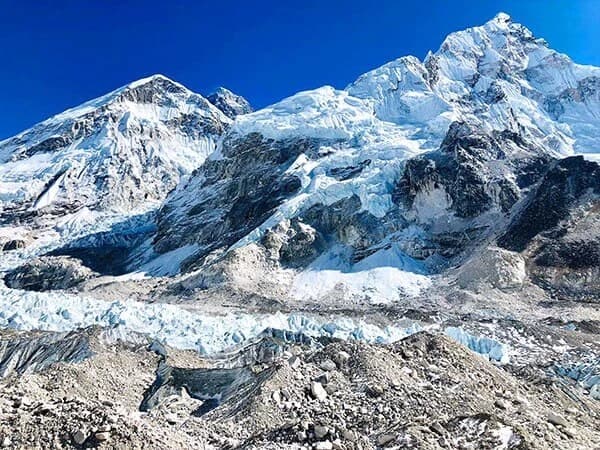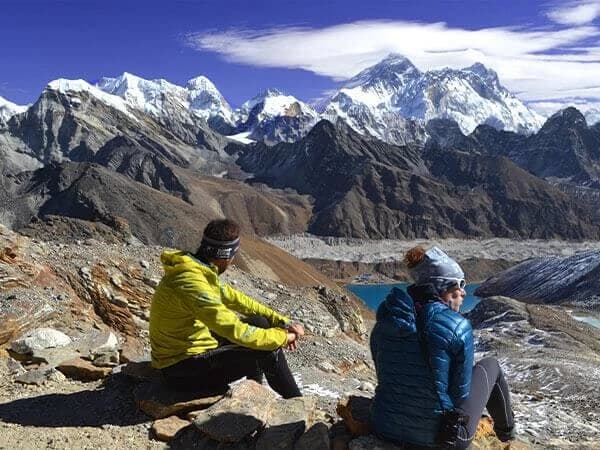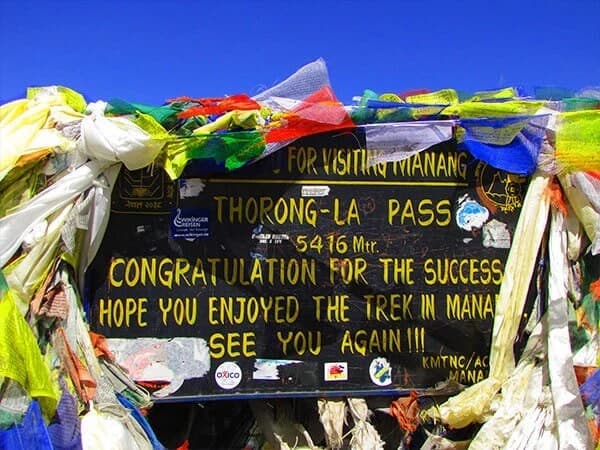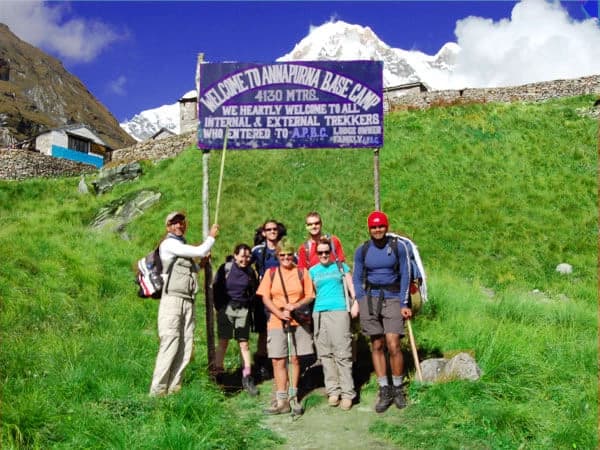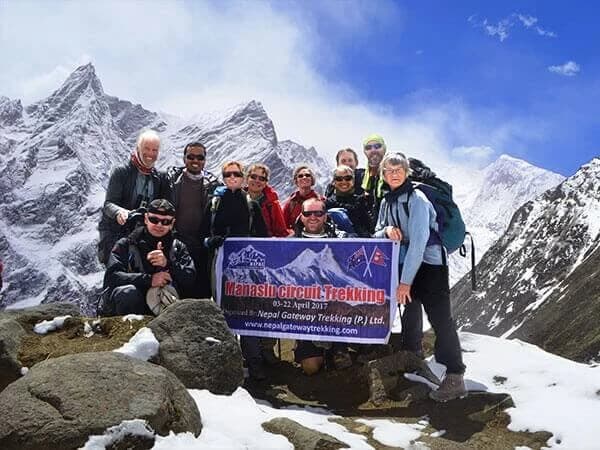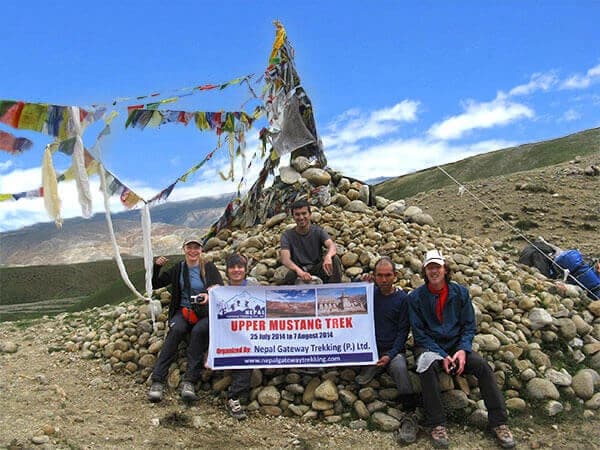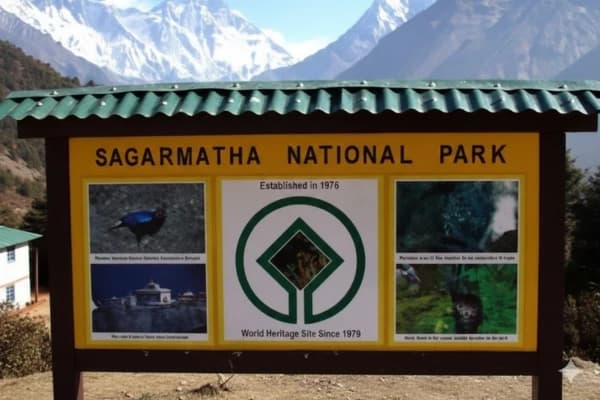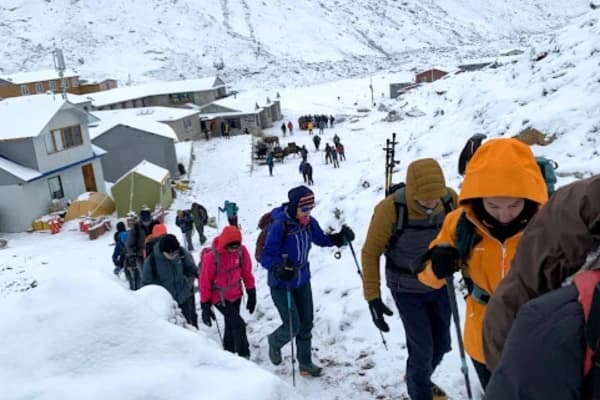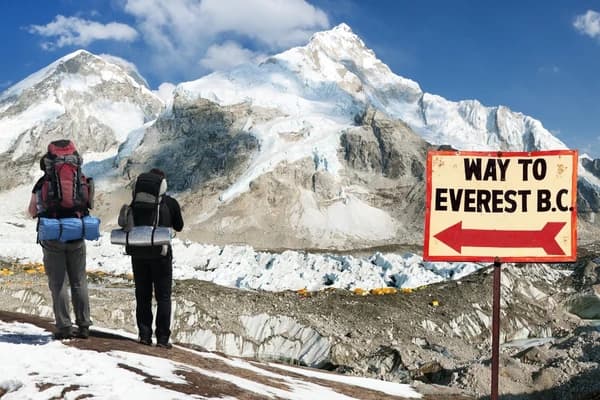Trekking is more than just a long walk. It is a multi-day journey through nature, usually in the mountains, forests, or remote villages, where the path becomes part of the adventure.
Unlike normal hiking, a trek is a long, often challenging journey on foot through natural areas like mountains, forests, or countryside. It usually lasts several days and involves rough or uneven paths, whether it’s a short, easy trail or a high-altitude route.
There are different types of trekking suited for all fitness levels and interests. You could go for a relaxed teahouse trek or a challenging one that involves camping and crossing rugged passes, as it mainly depends on what you want to experience.
Benefits of Trekking
Trekking helps you to get in shape, appreciate nature, and meet new people in new places. However, it can be exhausting, and the weather or high altitude may make it difficult. This elevates it above simply strolling; it is an adventure that demands planning and effort.
- Beautiful natural scenery
- Good physical activity
- Discover different cultures and people.
- Improves mental strength
Challenges of Trekking
Trekking isn’t like walking; the trails can be rough and steep, so it’s a bit more challenging. Along the way, most people stay in small guesthouses or teahouses to rest and eat, but camping is the way to go if there’s nowhere to stay. And a quick tip: avoid wearing jeans because they’re heavy and take forever to dry. Instead, wear light, comfy clothes that let you move easily and dry quickly. Common challenges are:
Trekking,
- Can be tiring
- The weather can be bad
- Limited clean water or toilets sometimes
- Altitude sickness risk

Why Do People Love Going on Trekking?
People love trekking because it is a great way to refresh their minds and bodies by getting closer to nature.
- Trekking helps you escape daily stress.
- It boosts your fitness and health.
- You experience raw, beautiful nature.
- You discover new cultures and meet locals.
- Finishing a trek builds confidence.
Trekking vs Hiking: What's Different?
Trekking is often confused with hiking, but the two offer very different experiences. While hiking is usually a short day walk, trekking involves longer journeys deeper into nature and culture.
|
Feature |
Hiking |
Trekking |
|
Duration |
A few hours or 1 day |
Multi-day journey |
|
Terrain |
Flat or gentle |
Remote, steep, or uneven |
|
Accommodation |
Return home |
Teahouses or tents |
|
Gear |
Light |
Trekking boots, poles, layers |
|
Planning |
Minimal |
Detailed route, gear, and permits |
What are the Types of Trekking?
There are various sorts of trekking to pick from:
- Teahouse trekking allows you to sleep and eat in mountain lodges along the way, saving you from having to carry heavy gear.
- Camping trekking is for those who want to camp in tents, often with a crew to help, and is great for remote or wild areas.
- Guided trekking means traveling with local experts who make the journey safer and more interesting.
- Solo or independent trekking lets you explore independently, but some restricted areas require permits or guides.
- High-altitude trekking takes you above 4,000 meters and needs good fitness and preparation.
- Treks also vary in length, from short 2-day trips to longer adventures lasting three weeks or more.
When is the Best Time for Trekking?
Trekking in Nepal can be done throughout the year, although each season has its own special traits.
- Spring (March to May) brings pleasant weather, blooming flowers, and clear mountain views.
- Autumn (September to November) is the most popular season, with consistent weather, bright skies, and local festivals.
- Winter (December to February) is cold and quiet, ideal for lower-altitude excursions and clear views.
- Monsoon (June to August) has heavy rains, making most trails slippery, but Upper Mustang and Dolpo stay dry and lush.
How Much Does Trekking Cost?
When planning your first adventure, it’s natural to wonder, what is trekking going to cost? Prices vary depending on the region, style, and level of comfort you choose.
- Budget treks: $25–$50 per day—great for independent travelers using basic teahouses.
- Mid-range treks: $50–$90 per day—includes local guides, better food, and comfortable stays.
- High-end or remote treks: $100+ per day—often include permits, porters, camping gear, and access to restricted areas.
Your total cost will depend on permits, meals, gear, accommodation, and whether or not you hire a guide or porter.
Not sure where to start your Himalayan journey? Our Featured Trips are crafted for every kind of trekker – from beginners to seasoned explorers. Explore now and find your trail.
How to Start Trekking as a Beginner?
If you’re wondering how to start trekking as a beginner and how to prepare for your first adventure, here’s a simple guide to get you ready:
- Select an easy walk, such as Australian Camp, Langtang Valley, or Poon Hill.
- To increase stamina, walk 3–5 km every day and climb stairs.
- Bring the smart essentials: a sturdy bag, rain gear, and boots.
- For icy trails, remember to pack crampons and a sleeping bag.
- Pack a headlamp, trekking poles, and layers of warm clothing.
- Throughout your hike, eat healthily and drink plenty of water.
First time trekking? Nepal Gateway Trekking helps you plan every detail with ease – customize your trip to match your pace, interests, and comfort level.
Is Nepal Best for Trekking?
Nepal is simply the best place to go trekking because of its stunning mountains, variety of trails, and the warm, friendly people you meet along the way. Whether you’re just starting out or have plenty of trekking experience, there’s something here for everyone.
You’ll walk through everything, rom green forests and small villages to high mountain passes with jaw-dropping views. What really makes Nepal special is how welcoming the locals are; they’ll treat you like family and make your journey feel comfortable and unforgettable. Trekking in Nepal isn’t just about the mountains; it’s about the whole experience, the nature, the culture, and the people you meet.
Experience the best of trekking in Nepal with Nepal Gateway Trekking – Explore Nepal Trekking Packages.
Popular Trekking Routes in Nepal
If you’re wondering what trekking is, then Nepal is the perfect place to find out. With dramatic landscapes, Himalayan peaks, and rich culture, it offers some of the best trekking routes in the world.
- The Everest Region (Khumbu) is a trek to Everest Base Camp through Sherpa villages with amazing mountain views.
- The Annapurna Region offers treks like Annapurna Base Camp and Poon Hill, featuring varied landscapes from fields to alpine meadows.
- The Langtang Region, near Kathmandu, provides peaceful treks with glacier views and rich Tamang culture.
- The Manaslu Region is a remote trek crossing Larkya La Pass with stunning views of Mount Manaslu.
- Upper Mustang is a desert-like trek with ancient caves and the walled city of Lo Manthang.
- The Dolpo Region involves an adventurous camping trek through wild, isolated terrain and a deep Buddhist culture tour.
Final Thoughts
So, what does trekking mean? It's more than just walking; it's an opportunity to find yourself, connect with different cultures, and see the Himalayas up close.
Nepal makes trekking easy and inviting to beginners. It has routes for all fitness levels, comfortable teahouse accommodations, and stunning scenery. Along the route, you'll discover rich traditions, exciting cultural festivals, and incredible photo opportunities.



